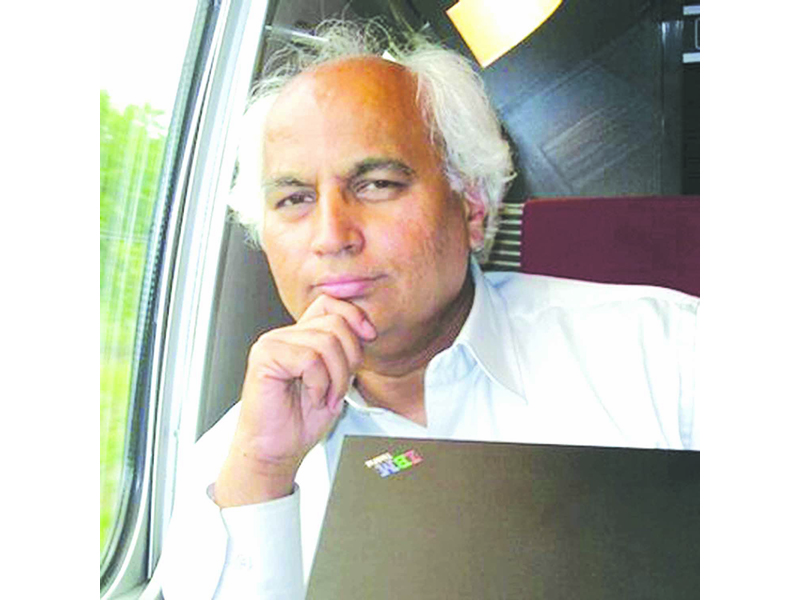NEET-UG 2024: Deep rot symptom
– Sudheendra Kulkarni is a former aide of prime minister Atal Bihari Vajpayee (1999-2004) and currently founder, Forum for South Asia.
Prime minister Modi is likely to meet China’s President Xi Jingping at the BRICS Summit in Russia on October 22-24. They should sieze the moment to restore ancient harmonious relations
The Economist, the world’s leading weekly magazine, cannot be accused of a pro-China bias. The opposite is true. It regularly features news and commentary critical of the country. Therefore, its readers were taken aback by a cover feature recently titled ‘China has become a Scientific Superpower’ (June 12). It reports that from plant biology to superconductor physics, from renewable energy to digital technologies, latter day China is at the cutting edge.
In 2003, America produced 20 multiples of high-impact scientific papers than China. Now China has surpassed America and the entire European Union on this metric. Establishing world-class universities and government institutions, and encouraging best Chinese brains abroad to return to China, has been a part of Beijing’s scientific development plan.
Between 2000-2019, more than six million Chinese students left the country to study abroad. Now, more scientists have been returning to the country than leaving. China now hosts more research scholars than America and the European Union combined. “Tsinghua is now the #1 science and technology university of the world,” says Simon Marginson, a professor of higher education at Oxford University. “That’s amazing. They’ve done that in a generation.”
How is all this transforming China’s economy and, more important, how could it impact India? To examine the first question, it is useful to understand what the Communist Party of China (CPC) is doing to overcome the current slowdown in the economy and also to achieve “common prosperity” in society by significantly reducing social and regional disparities. At its landmark ‘third plenum’ held in July, CPC stressed that its goal is ‘high quality development’ (and not mere quantitative GDP growth).
To achieve this goal, China is relying on the rise of “new quality productive forces” driven by latest advances in science and technology. Under this objective, it intends to modernise every sector of the Chinese economy — agriculture, industry, financial system, infrastructure, logistics, services, healthcare and the rest — with the use of AI, robotics, blockchain, life sciences and other science and technology breakthroughs to usher in an era of unprecedented gains in productivity and efficiency.
China now ranks #1 worldwide in the number of science and technology innovation clusters. Moreover, in terms of production and use of solar photovoltaic panels and other clean and green energy products, China is far ahead of the rest of the world. In fact, China installed more solar panels in 2023 than the US has ever built, setting new standards in low carbon footprint.
Even more creditable is that China has achieved all this with atmanirbharata (self-reliance), in which it is far ahead of India. Without maximum self-reliance in scientific research and technological innovation in strategic areas, it could not have withstood the technology and economic sanctions imposed by the West. CPC has now resolved to further accelerate major reforms in education and development of high calibre human resources; permit autonomous management of universities and research institutions; and provide greater boost to high-tech enterprises.
There is much India can learn from our northern neighbour. Nobody is more aware of this than India’s big business and industry. India Inc knows it can benefit hugely from China’s spectacular advances, especially in renewable energy, electronics, digital technologies and infrastructure modernisation. In recent months, industry and business leaders have been pressing government to ease growth-hindering visa restrictions for Chinese business partners, engineers and technicians which were imposed after the Galwan Valley military clash of 2020. They have also sought relaxation in rules for joint ventures with Chinese companies.
In a major setback for Indian hawks demanding boycott of Chinese goods and services, in the Economic Survey 2024, India’s chief economic adviser V. Anantha Nageswaran has proposed India Inc integrating with China’s supply chain to strengthen our manufacturing sector, and has also advocated Chinese FDI (foreign direct investment) to boost our exports to the US and Europe.
Prime minister Modi is likely to meet Chinese President Xi Jinping at the next BRICS Summit in Russia on October 22-24. The two leaders should seize the moment to fully normalise our bilateral relations, so the Elephant and the Dragon can begin a new tango of economic and technology cooperation.
The hurdle they have to overcome is the lingering Sino-India border dispute which is a legacy of the British Raj and has ruined centuries of peace, harmony and cultural exchanges between our two giant Asian nations. India needs to climb down from its ‘talks-but-no negotiations’ policy on borders demarcation and settlement with China. Bona fide negotiations involving give and take on both sides can restore ancient harmonious relations, and usher in an era of prosperity for 2.8 billion people.

















Add comment